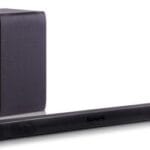Have you ever found yourself dealing with annoying leaks from brass fittings? It’s frustrating, isn’t it?
You try to tighten them, but somehow, they keep dripping. This common issue can lead to water wastage, higher bills, and potential damage to your home. But don’t worry; you’re not alone. Many people experience the same problem, and there’s a solution waiting for you.
You’ll discover simple, effective steps to stop brass fittings from leaking. Imagine the relief of having dry floors and a secure plumbing system. Keep reading to learn how you can prevent leaks and save both time and money. Your peace of mind is just a few easy steps away.

Credit: www.youtube.com
Common Causes Of Leaks
Brass fittings are essential in plumbing systems. They connect pipes and prevent leaks. Yet, leaks can still occur. Understanding the common causes of leaks is crucial. This knowledge helps in preventing future issues.
Material Defects
Material defects can lead to leaks. Brass fittings may have flaws from manufacturing. These flaws weaken the fitting. A weakened fitting increases the chance of leaks. Always inspect fittings for visible defects before use.
Improper Installation
Improper installation often causes leaks. Tightening fittings too much can damage them. Loose fittings fail to seal properly. Both scenarios result in leaks. Following installation guidelines is key. Use the right tools and techniques.
Wear And Tear
Wear and tear happen over time. Constant use stresses brass fittings. Temperature changes cause expansion and contraction. This weakens the material. As a result, leaks develop. Regular checks help catch wear early. Replace worn fittings promptly.
Inspection Techniques
Brass fittings are crucial in plumbing systems. They ensure smooth water flow and prevent leaks. Over time, these fittings can wear out or become damaged. Regular inspections are vital for maintaining their efficiency. Let’s explore some effective inspection techniques to keep your brass fittings in top shape.
Visual Checks
Start by examining the brass fittings closely. Look for any visible damage or corrosion. Cracks and discoloration can indicate potential leaks. Ensure the fittings are properly aligned and securely connected. A loose fitting might lead to water leakage.
Pressure Testing
Pressure testing helps identify hidden leaks. Use a pressure gauge to measure the system’s pressure. Compare the readings with standard values. A drop in pressure can signal a leak. This method is effective for detecting issues that aren’t visible.
Listening For Leaks
Listening can be a powerful inspection tool. Put your ear close to the fittings and listen for hissing sounds. These sounds often indicate escaping air or water. This technique is simple yet effective in pinpointing leaks in brass fittings.
Effective Sealants
Effective sealants play a crucial role in preventing leaks in brass fittings. Selecting the right sealant ensures long-lasting and reliable connections. Understanding various sealants helps make informed choices for your plumbing needs.
Types Of Sealants
Several sealants are available for brass fittings. Teflon tape is widely used for its ease of application. It wraps around threads and provides a tight seal. Pipe dope is another option, offering a liquid solution that fills gaps. Silicone sealants are ideal for their flexibility and durability. Each type has unique benefits.
Application Methods
Proper application methods are vital for effective sealing. Teflon tape requires wrapping the threads clockwise. Ensure the tape overlaps for a strong seal. Pipe dope involves applying a thin layer on threads. Use a brush for even coverage. Silicone sealants need a caulking gun for precise application. Follow instructions for the best results.
Curing Times
Curing times vary among sealants. Teflon tape provides an immediate seal. Pipe dope requires a few hours to cure fully. Silicone sealants need up to 24 hours for complete curing. Allow sealants to cure before testing for leaks. Patience ensures a reliable seal.

Credit: cntopa.com
Proper Installation Practices
Proper installation practices are essential for preventing leaks in brass fittings. A secure fit ensures durability and efficiency in plumbing systems. Mastery of these practices minimizes future maintenance and repair costs. This section will guide you through key techniques to ensure leak-free installations.
Threading Techniques
Correct threading is crucial for leak prevention. Align threads carefully before tightening. Cross-threading can cause damage and leaks. Use thread sealant or tape for a tighter seal. Wrap the tape clockwise around the threads. This ensures a snug fit and prevents leaks.
Torque Specifications
Apply the correct torque to fittings. Over-tightening can crack fittings or damage threads. Under-tightening can lead to leaks. Check manufacturer guidelines for specific torque values. Use a torque wrench for precise measurements. This ensures fittings are secure without damage.
Using Tools Correctly
Choose the right tools for brass fittings. Use wrenches that fit well to avoid slipping. Avoid using excessive force. It can deform or damage fittings. Use adjustable wrenches for varied sizes. Proper tool use ensures secure and leak-free installations.
Maintenance And Prevention
Prevent brass fittings from leaking by ensuring a tight seal with thread tape or sealant. Regularly check for wear and tighten connections as needed. Proper installation and maintenance can help avoid leaks and ensure long-lasting performance.
Maintaining brass fittings is key to preventing leaks. Regular care ensures durability and efficiency. Simple actions can make a big difference. Follow these steps to keep your fittings in top shape.
Regular Inspections
Inspect fittings every few months. Check for any signs of wear. Look for cracks or corrosion. Early detection stops small issues from growing. Use a flashlight for better visibility. Turn off water supply before inspection. This keeps things safe and dry.
Replacing Worn Parts
Replace worn parts immediately. Worn parts are a common cause of leaks. Keep spare parts on hand for quick fixes. Use quality parts for replacements. Ensure the new parts fit well. This ensures tight seals and prevents leaks.
Keeping Fittings Clean
Clean fittings often to prevent dirt buildup. Dirt can cause blockages and leaks. Use a damp cloth for cleaning. Avoid harsh chemicals that can damage brass. Dry the fittings after cleaning to prevent water spots. Clean fittings last longer and work better.

Credit: cntopa.com
Emergency Leak Solutions
Brass fittings can leak due to wear or improper installation. When leaks occur, they need quick solutions. Emergency leak solutions can prevent further damage. They also buy you time for a permanent fix.
Temporary Fixes
Using plumber’s tape can seal small leaks fast. Wrap the tape tightly around the fitting threads. This creates a temporary barrier against leaks. Another solution is using pipe sealant. Apply it around the leaking area for a quick fix. Epoxy putty is also useful. Mold it around the leak and let it harden. These fixes are not permanent. They are only meant to stop leaks temporarily.
Professional Repair Services
Sometimes, leaks need expert help. Professional plumbers have the right tools and skills. They can assess and fix leaks efficiently. They also ensure the problem doesn’t worsen. Hiring a professional can save time and stress. Look for certified and experienced plumbers. They will provide quality service and peace of mind.
Safety Precautions
Always take safety measures during repairs. Turn off the water supply before starting. This prevents further leaks and water damage. Wear protective gloves to avoid injuries. Keep tools and materials nearby for easy access. Ensure the area is well-lit. This helps in spotting leaks and avoiding accidents. Prioritize safety at all times during repairs.
Frequently Asked Questions
How Can I Identify A Leaking Brass Fitting?
Check for water droplets or dampness around the fitting. Listen for hissing sounds.
What Causes Brass Fittings To Leak?
Brass fittings can leak due to corrosion, improper installation, or worn-out seals. Check for these issues.
How Do I Fix A Leaking Brass Fitting?
Tighten the fitting using a wrench. Replace any damaged seals or washers. Ensure connections are secure.
Are There Specific Tools Needed To Repair Brass Fittings?
Yes, a wrench and sealant tape are essential. Ensure you have replacement washers and seals handy.
Can I Prevent Brass Fittings From Leaking?
Ensure proper installation. Use sealant tape. Regularly check and replace worn-out parts to prevent leaks.
Conclusion
Stopping leaks in brass fittings is essential for smooth operations. First, ensure all connections are tight and secure. Use thread sealant or tape to prevent leaks. Regular checks help catch leaks early. Replace damaged parts immediately to avoid bigger issues.
Proper maintenance keeps your fittings leak-free. With these steps, you can protect your plumbing system. No more worrying about leaks. Enjoy the peace of mind that comes with well-maintained fittings. Follow these tips and keep everything running smoothly. Your efforts will save time and money in the long run.
Happy plumbing!




